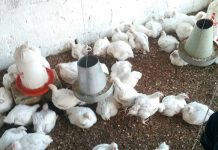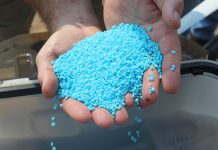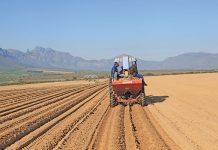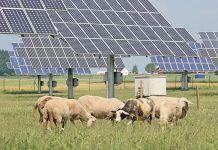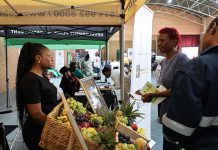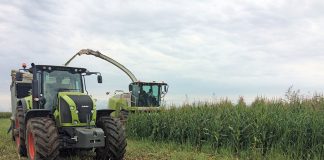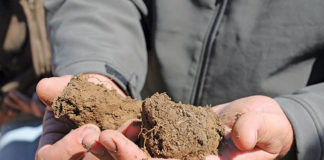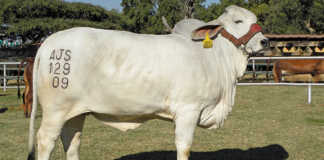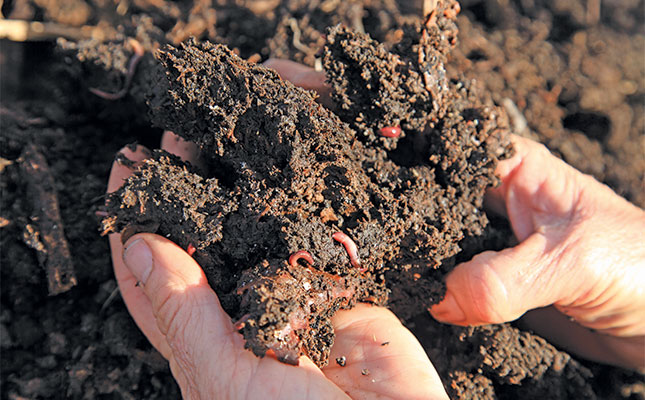
Photo: Glenneis Kriel
Over the past decade, awareness of the importance of healthy soil for sustainable production has grown. For some, having healthy soil merely refers to soil that is full of life, but there is much more to it.
Sheila Storey, co-founder and consultant at the Soil Health Support Centre in Klapmuts, Western Cape, defines healthy soil as the ongoing capacity to function as a vital living ecosystem that sustains plants, animals, and humans.
As such, healthy soil is not about what you have in the soil but rather the dynamic processes that take place in the soil.
Soil functioning, she adds, has chemical, physical and biological components. The chemical components range from anything from nutrients, organic material, macro- and micronutrients to the cation exchange capacity.
The physical components touch on things like soil texture, pore size, compaction, water infiltration, and water-holding capacity and drainage, while biology has to do with soil biodiversity, organic carbon, microbial biomass, pests and diseases, mineralisation, genetic diversity, and so forth.
“The trick is to find the place where all of these are in good balance to facilitate healthy soil processes,” says Storey.
Focusing on merely one of the three main components is futile. For instance, merely addressing the chemical needs of the soil might result in a waste of fertiliser and further shift the balance off kilter, resulting in farmers having to use more and more fertiliser to get the same production results over time.
Chemical components, however, cannot be neglected, as failure to supply the nutritional needs of a crop will result in poor harvests, no matter what commodity you farm.
Assessing soil health
But how can soil health be assessed? Storey says that farmers can start by feeling the soil to assess its texture; dig a root soil profile to get a look at root penetration, soil layers, and compaction; and use a penetrometer to assess compaction and the depth of the soil. They should also look at the organisms they see in the soil.
“Nematodes are a much better indicator of soil health than earthworms, but if you see a lot of earthworms, you’re probably on the right track,” says Storey.
She warns farmers against taking soil health courses that promise to turn them into soil experts within a few weeks.
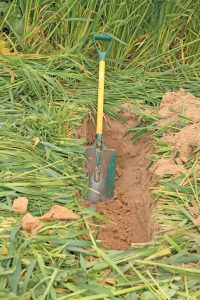
“There is a course, costing over R70 000, which promises to turn participants into soil experts by the end of four weeks, whereas it takes at least four years to become a scientist.
“This specific course teaches people to take a spoonful of soil, as a soil sample, then shake it in water to evaluate the health of the soil. This is utter nonsense. It is unscientific and impossible to gain any meaningful insights from such a small sample,” she explains.
Storey says there might be some truths that farmers can take from these courses. The one she is thinking of, for instance, includes good information on compost-making. Unfortunately, however, a lot of the information is not science-based.
“Soil health has been mystified because we did not know much about it a decade or so ago. Studying soil health is also quite difficult because it requires a holistic approach that covers a vast field of sciences. Even so, a lot of science-based information has become available that has deepened our understanding of it,” she adds.
Laboratory tests
When looking at the biological aspect of soil health, Storey advises farmers to start with a microbial respiration test, which evaluates whether there is life in the soil. The measurement is based on the amount of carbon dioxide released as microbes consume oxygen and break down organic material.
“Do not move on to another test if there is low microbial activity. Instead, focus on building soil life,” she says.
If a high score is achieved in the microbial respiration test, farmers can move on to the volumetric aggregate stability (VAS) test. The VAS test evaluates whether soil microbes are doing their work; in other words, whether the soil shows any benefits of microbial activity.
From there, farmers can look at soil biology and chemistry with the Haney test and a nematode community profile analysis.
The Haney test, among others, measures water-extractible organic nitrogen and carbon. It does not use any harsh chemicals to extract nitrogen, phosphorus and potassium, but mimics the chemistry of root exudates to determine the availability of these elements to plants.
Storey explains that farmers who successfully improve the health of their soils are typically able to reduce their nitrogen applications by more than half over time, because increased microbial activity can render nutrients that are ‘locked’ in the soil into a plant-available form.
The nematode profile analysis evaluates soil health by identifying all the nematodes in a soil sample to family level, classifying these into feeding groups, and evaluating the relationship between them.
“Nematodes are a diverse group that cover very diverse environments. They can be divided into different feeding, or what we call trophic, groups, ranging from plant feeders to bacterial feeders, fungal feeders, omnivores, nematode predators and root exudate feeders. The balance between these groups gives a good indication of soil health,” says Storey.
Enzyme tests are also available on the market to test whether the nutrient cycling is working in the soil.
Key factors for healthy soil
Strategies for building soil health will differ from one farm to another, depending on the crop produced, climate, soil type, business strategy, availability of land, and so forth.
However, the principles remain the same. Sheila Storey identifies these principles as follows:
- Cover your soil. This can be done with compost, mulch, cover crops, or by retaining stubble to prevent the soil from drying out and baking in the sun.
- Minimum disturbance. Use minimum to no tillage, and drive on the same tracks to prevent compaction. The less the soil is disturbed, the more stable the habitat for the microbes is.
- Living roots. Farmers should ideally have living roots in their soil throughout the year, but this isn’t always possible in warm, dry regions.
In this case, farmers should try to have living roots for as long as possible. - Diversity. The more above-ground diversity, the more diversity in the soil. In grain production, this means rotating crops.
- Have an animal factor. Where possible, animals should be introduced into the system to bring more diversity. Their feeding and other actions on the soil will also help to boost other soil functions.
The value of carbon
Storey says that farmers often get blinded by the carbon levels of their soil when they become more focused on soil health. The problem, though, is that there are many different forms of carbon, with the Haney test checking for one of these, and various ways to test for other forms of carbon.
Subsequently, the results of the different tests cannot always be compared. Farmers, for this reason, should stick to one standardised, science-based test.
“Do the test annually at the same time of the year, for instance just before you plant or after you have harvested. If the carbon levels are increasing, you are probably on the right track,” Storey says.
But she warns that farmers should not have unrealistic expectations from their efforts to build soil carbon levels. “You will not be able to raise soil carbon levels overnight, never mind a year or two. On a pome fruit farm in the Koue Bokkeveld, for instance, it took almost 20 years to increase the soil carbon content from 0,4% to 4%.”
Farmers should also remember that South Africa’s soils are generally low in carbon.
“It will be physically impossible to get high carbon levels in the Swartland because of the dry conditions. We are sitting with the Cape Fold Mountains, constituting some of the oldest and most eroded soils in the world, but people want to do magic and turn it into something like the Amazon. Always remember the context within which you are working,” says Storey.
Improving soil health
Storey says that farmers often ask her to identify specific organisms in the soil because they think that it would give them an indication of soil health. To her, this is meaningless, unless they want to test for diseases or they want to evaluate root health, for instance whether there are sufficient mycorrhiza or Trichoderma in the soil.
“Remember, soil health is about soil processes that are functioning correctly and not what you have in the soil,” she says.
Since soil health is about processes, it also cannot be fixed by adding specific organisms to the soil.
“You will benefit from having legumes, such as canola, inoculated with rhizobium or adding organisms, such as mycorrhiza or Trichoderma, to the root zone of some other crops, but these additions will not fix overall soil health problems,” explains Storey.
“Unfortunately, there is no recipe or quick fix as everything depends on the context within which a farmer works. The same principles, however, apply, and can be adapted to suit the context within which a farmer is working and as soil health improves,” she says.
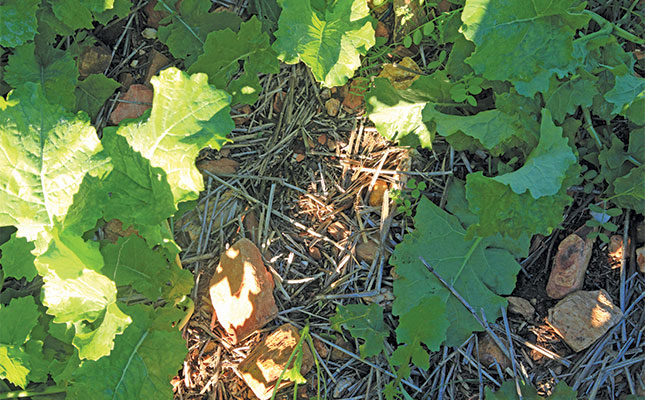
While it takes time for interventions aimed at improving soil health to be rewarded, the result is a much more sustainable farming system.
“A plant growing in healthy soil is much more resilient than one that grows in poor soil, and these soils become like sponges, making them able to retain more moisture and less vulnerable to floods, heatwaves and droughts,” Storey concludes.
For more info email Sheila Storey at [email protected].


